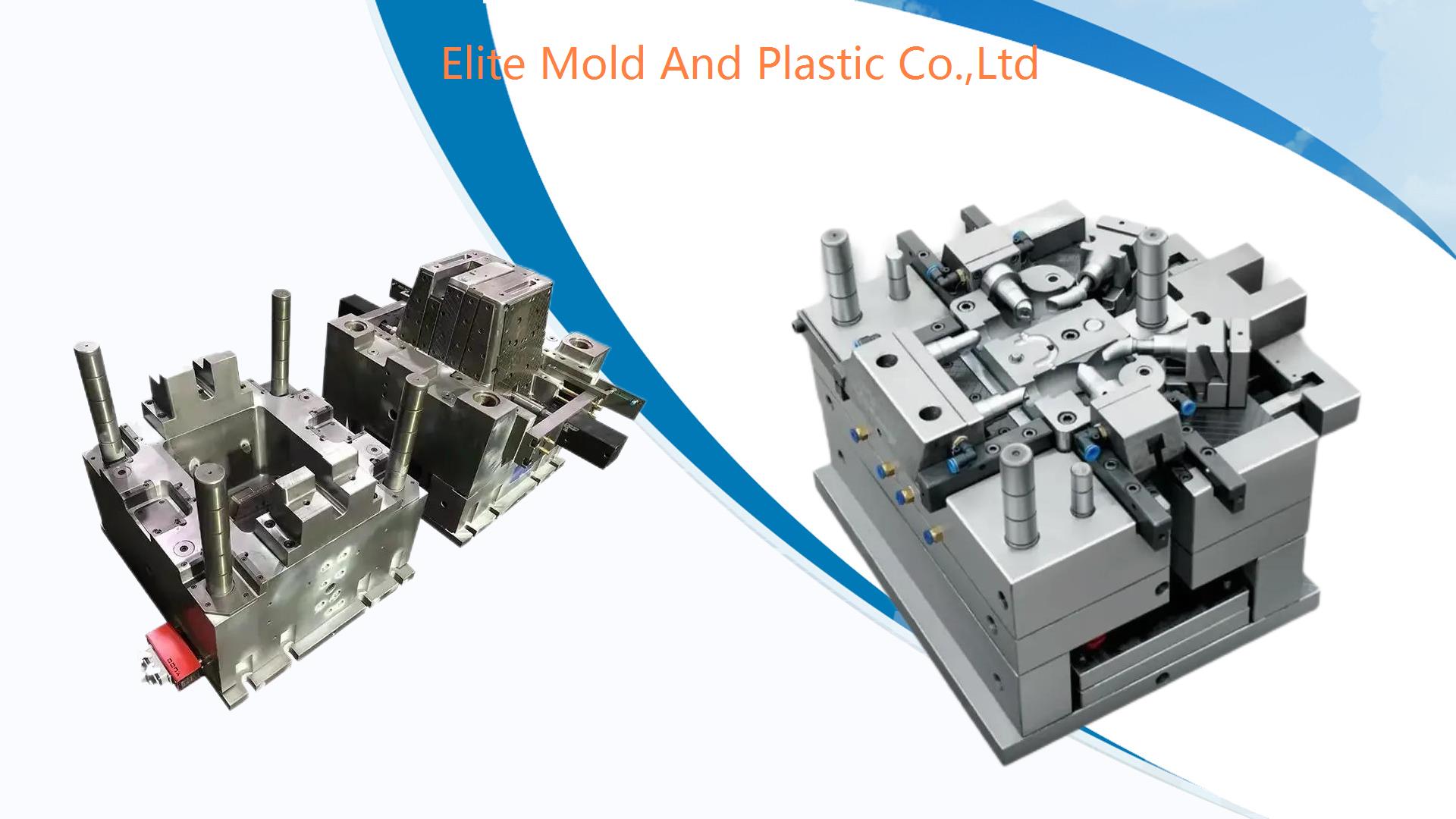How Mold Cooling Systems and Gate Design Impact Injection Mold Performance
As a leading plastic injection mold manufacturer based in China, Elite takes pride in delivering high-quality molds and molded parts that meet the demands of clients around the world. Two critical factors that directly impact the performance of injection molds are the mold cooling system and gate design. Optimizing these elements can enhance the overall efficiency, quality, and precision of the injection molding process. In this article, we will discuss how mold cooling systems and gate design influence injection mold performance and how Elite implements best practices to ensure top-tier results.
The Role of Mold Cooling Systems in Injection Mold Performance
The cooling phase is one of the most important parts of the injection molding cycle. During this phase, the molten plastic solidifies inside the mold to form the desired part. Efficient cooling is crucial because it affects both the cycle time and the quality of the final product.
1. Importance of Cooling Systems
Reducing Cycle Time
The time it takes for a part to cool and solidify inside the mold often represents the longest phase of the injection molding cycle. A well-designed cooling system can significantly reduce this time, improving production efficiency and lowering costs.
- Optimized cooling channels help distribute heat evenly throughout the mold, speeding up the cooling process and reducing cycle times.
- Faster cooling reduces the amount of time the part stays in the mold, which allows for more parts to be produced in less time.
Enhancing Part Quality
Efficient cooling systems help maintain consistent temperatures throughout the mold, which is critical for producing high-quality parts. Uneven cooling can lead to defects such as warping, sink marks, and residual stresses.
- Uniform cooling prevents distortion and shrinkage by ensuring that the plastic cools evenly.
- Consistent part quality is maintained, reducing the need for rework or part rejection.
2. Types of Cooling Systems
Elite incorporates different types of cooling systems depending on the complexity and size of the mold. These include:
Conventional Cooling Systems
Conventional cooling systems use straight channels drilled into the mold to allow for the flow of a cooling fluid, typically water. These systems are ideal for simple part designs and provide adequate cooling for many types of plastic molds.
- Simple to design and cost-effective
- Best suited for basic parts with uniform thickness
Conformal Cooling Systems
Conformal cooling systems follow the contours of the mold cavity, allowing for more efficient heat dissipation, especially in molds with complex geometries. These systems are often created using advanced techniques such as 3D printing or CNC machining.
- Improved cooling efficiency for complex molds
- Reduces cycle time by up to 30% compared to conventional systems
- Ensures more uniform temperature distribution
3. Best Practices for Cooling System Design
At Elite, we follow best practices in cooling system design to maximize mold performance:
- Strategic placement of cooling channels: We ensure that cooling channels are positioned close to the mold cavity, especially in areas where heat tends to build up.
- Balanced cooling: We design cooling systems to provide consistent temperature distribution across the mold to avoid warping or other defects.
- Optimizing cooling fluid flow: Controlling the flow rate of the cooling fluid ensures that the mold remains at the right temperature throughout the injection molding cycle.

The Impact of Gate Design on Injection Mold Performance
Gate design plays a crucial role in how the molten plastic enters the mold cavity. The size, location, and type of gate can affect the filling process, cycle time, and overall part quality.
1. Importance of Gate Design
Controlling Flow of Material
The gate is the point at which the molten plastic enters the mold cavity. Proper gate design ensures smooth and efficient filling of the cavity, which is critical for producing high-quality parts without defects such as flow lines or short shots.
- Smooth material flow prevents defects like air traps and weld lines.
- Optimized gate placement helps fill the cavity uniformly, reducing the risk of uneven pressure or material buildup.
Managing Cooling and Solidification
The gate also controls the flow of plastic as it cools and solidifies inside the mold. A well-designed gate prevents over-packing of the material, which can cause internal stresses and distortions.
- Proper gate size ensures that the material cools efficiently, avoiding delays in solidification.
- Minimized gate vestige prevents unsightly marks or imperfections on the final part surface.
2. Types of Gates and Their Impact
Different gate designs are suited for different part geometries, material types, and production requirements. Elite selects the most appropriate gate design based on these factors to optimize performance.
Edge Gate
An edge gate is located on the parting line of the mold and is commonly used for large, flat parts.
- Suitable for high-volume production
- Easy to trim, with minimal gate vestige
- Ideal for parts with large surface areas
Submarine Gate (Tunnel Gate)
Submarine gates are located beneath the parting line and are typically used for small, delicate parts.
- Minimal post-molding finishing required, as gate vestige is small
- Best suited for multi-cavity molds and high-precision parts
Hot Runner Gate
Hot runner gates use a system that keeps the plastic in the runner hot, ensuring a continuous flow of molten material.
- Eliminates waste by keeping material molten and reducing the need for trimming sprues
- Faster cycle times due to improved material flow and consistent gate temperatures
- Ideal for high-volume production of complex parts
3. Best Practices for Gate Design
At Elite, we prioritize the following practices to optimize gate design for better injection mold performance:
- Strategic gate placement: We place gates in locations that promote uniform filling of the mold cavity, avoiding defects like weld lines and air traps.
- Correct gate size: The gate size is tailored to the material flow properties and part geometry to ensure efficient filling without over-packing.
- Minimizing gate vestige: For parts requiring a clean finish, we choose gate designs like submarine gates to minimize visible gate marks.
How Mold Cooling Systems and Gate Design Work Together
The performance of an injection mold depends on the synergy between the cooling system and gate design. Both elements influence the overall quality, efficiency, and cycle time of the molding process. Here’s how they interact:
1. Optimizing Material Flow and Cooling
A well-designed gate ensures smooth material flow into the mold cavity, while an optimized cooling system ensures that the material solidifies evenly without defects. If the gate allows for efficient flow, but the cooling system is not properly designed, the material may cool unevenly, leading to warping or shrinkage.
- Balanced flow and cooling result in uniform part quality and faster cycle times.
- Consistent gate performance ensures that material flows efficiently into all areas of the mold, while the cooling system manages temperature variations.
2. Reducing Cycle Time
Efficient cooling systems and proper gate design both contribute to shorter cycle times. A well-designed cooling system reduces the time required for the plastic to solidify, while an appropriately sized and placed gate allows for faster and more controlled material flow into the cavity.
- Optimized gate and cooling reduce overall cycle times, increasing production output.
- Improved efficiency means less downtime, reduced waste, and cost savings for high-volume production runs.
3. Preventing Defects
A poorly designed gate or cooling system can lead to a variety of defects, including warping, sink marks, air traps, and flow lines. By carefully designing both the cooling system and gate, Elite ensures that defects are minimized, and part quality is consistently high.
Conclusion
Both mold cooling systems and gate design play vital roles in determining the performance of an injection mold. As a trusted plastic injection mold manufacturer, Elite leverages its expertise to optimize these elements, ensuring that our molds produce high-quality parts efficiently and cost-effectively. By integrating best practices in cooling system and gate design, we deliver molds that meet the highest standards for precision, durability, and performance.
If you are looking for a reliable partner for your injection molding needs, Elite is here to help. Contact us today to learn more about our mold design services and how we can enhance your production process with optimized cooling systems and gate design solutions.
Related news
Our Certificates
By co-operating with Elite Mold, you have selected one of the most reliable ISO 9001 certified plastic mold manufacturer, Elite Mold as a plastic injection mold manufacturer specializing in plastic injection mold and supplying plastic injection molding services for plastic mold design, prototype makings, mold flow analysis, precise machining, OEM services, ODM services and so on, building custom plastic injection molding. We are committed to enhance the Process optimized and quality of service, shorten lead time and assist in lowering inventory, by providing new products every year to bring in continuous and higher profits for our clients. The ability to produce mold at the International standard, strong engineering and mold design capability, aggressive delivery, competitive pricing and business integrity continues to be the success factor of Elite Mold.










